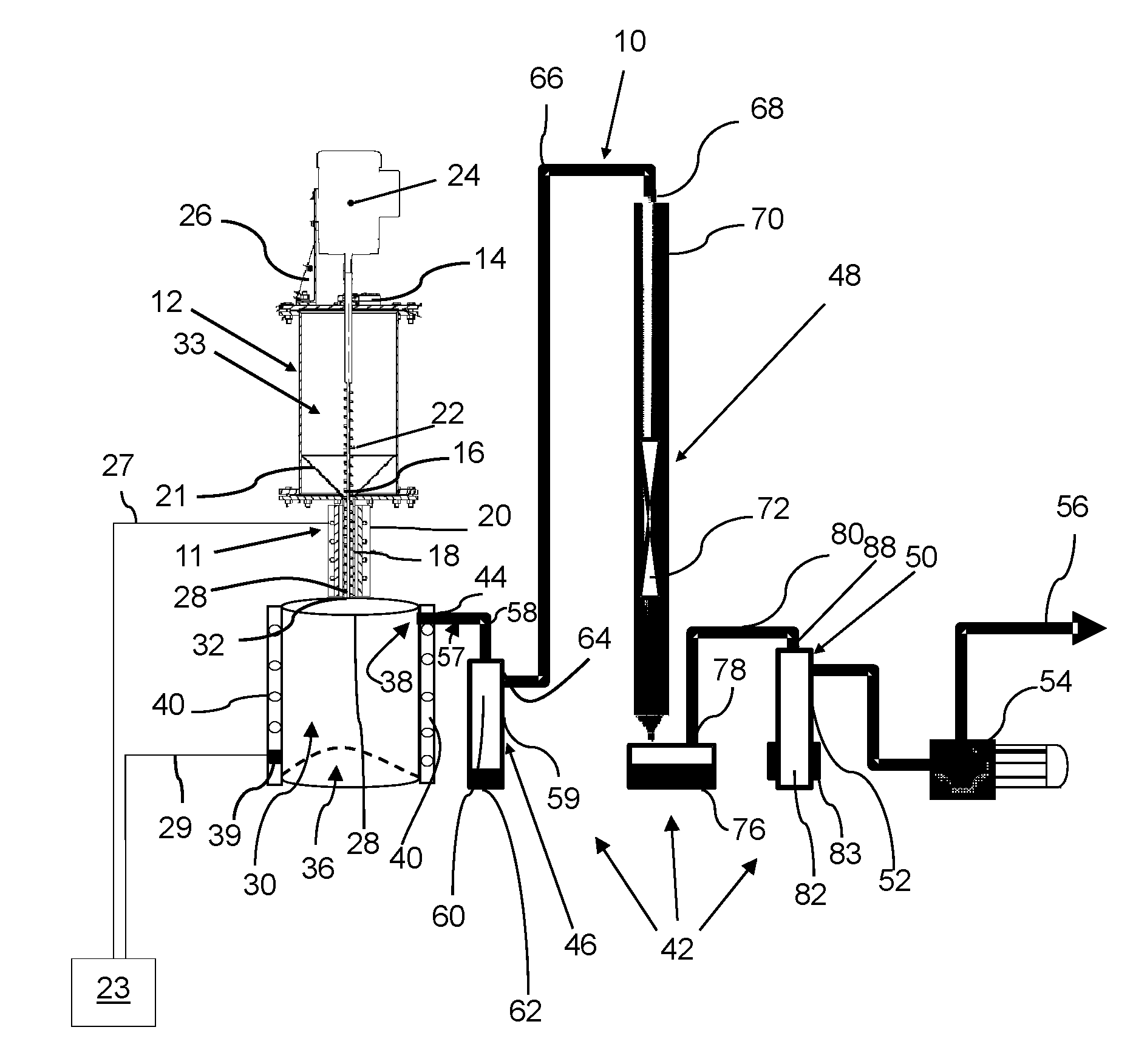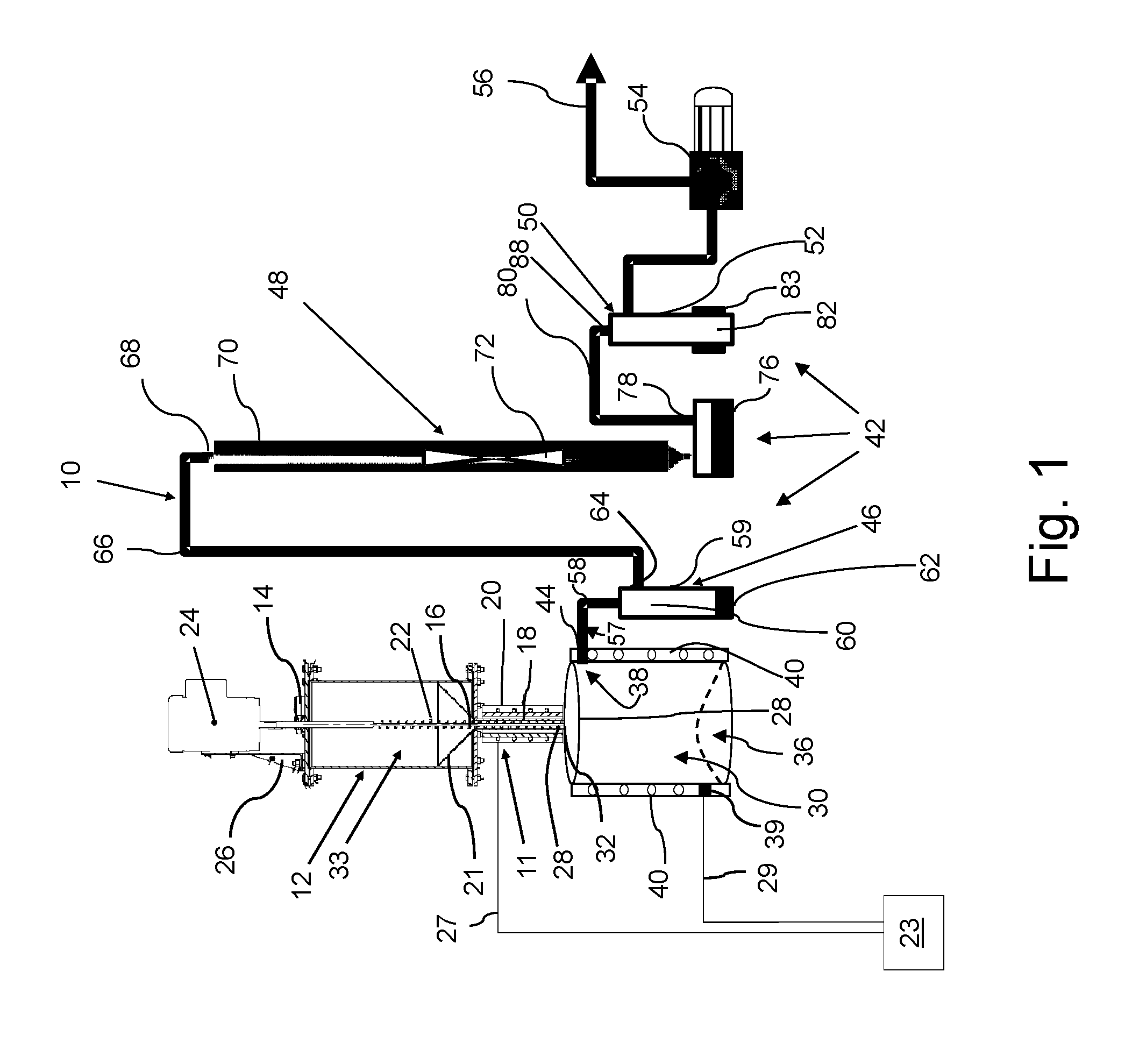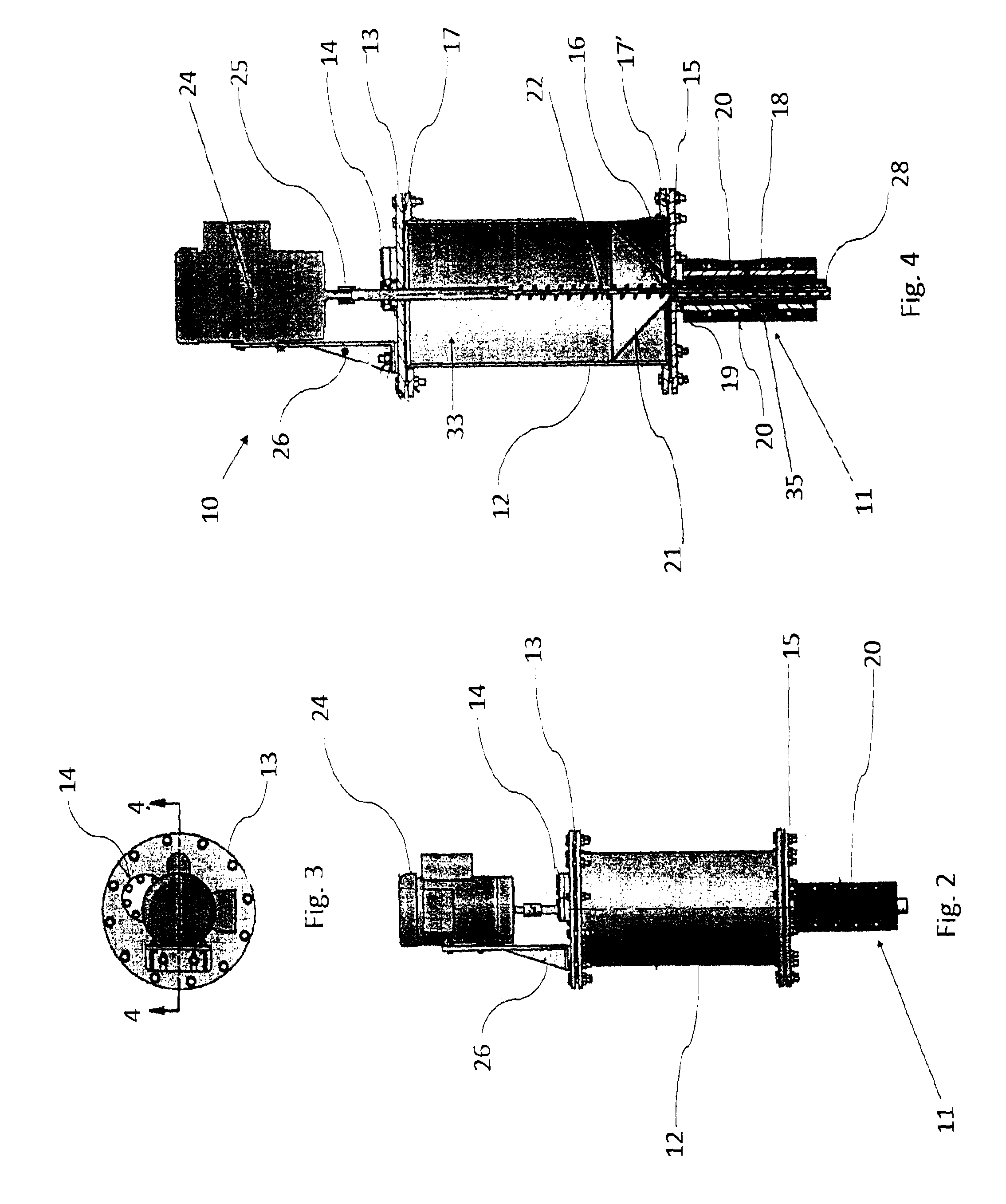System and process for thermochemical treatment of matter containing organic compounds
a technology of organic compounds and thermochemical treatment, which is applied in the direction of combustible gas production, waste based fuel, fuels, etc., can solve the problems of threatening soil quality and eutrophication of natural water bodies, swine production in canada, and a new challenge for the management of the solid fraction produced by this approach
- Summary
- Abstract
- Description
- Claims
- Application Information
AI Technical Summary
Benefits of technology
Problems solved by technology
Method used
Image
Examples
example 1
Modeling of Optimal Operation Parameters
[0194]To determine the optimal operating parameters of a pyrolysis process according to the present invention, including the reaction temperature, the feed rate of biomass and its granulometry (particle size), to maximize the yield of bio-oil, the method of Box-Behnken was applied for these three parameters (factors) for three levels each with three replicates at the central point. The general form of the Box-Behnken model for these three factors can be represented by the following equation:
PC_OIL=β0+β1TEMP+β2FEEDRATE+β3SIZE+β4(TEMP*TEMP)+β5(FEEDRATE*TEMP)+β6(FEEDRATE*FEEDRATE)+β7(SIZE*TEMP)+β8(SIZE*FEEDRATE)+β9(SIZE*SIZE)+ε
[0195]where:
[0196]PC_OIL is the percentage of bio-oil;
[0197]β0-β9 are the regression coefficients, and
[0198]ε is the random error term from a normal distribution with mean 0 and variance σ2.
[0199]A total of 15 trials according to an experimental plan of Box-Behnken programmed as shown in Table 2 were performed in random ord...
example 2
Physicochemical Properties of Bio-Oil
[0233]The physicochemical properties of the bio-oil obtained under the optimum operating conditions, such as dynamic viscosity, density, pH, ash content, and particles insoluble in methanol, the calorific value and moisture content were determined according to modified ASTM methods. The difference between the calorific values of bio-oils reflects the complex influence of operating parameters on the quality of products produced and their degree of heterogeneity. It should be noted that once stored cold to prevent their polymerization, the bio-oil separate into different phases during cooling, making it difficult to take small samples (mg) after storage for analysis. The results of 15 tests provided by the Box-Behnken plan are summarized in Table 12. During these tests, the condensed bio-oil collected in the first reservoir 59 and the second reservoir 76 were mixed for analysis.
[0234]
TABLE 12No12345678525° C.475° C.475° C.525° C.475° C.525° C.475° ...
example 3
Physicochemical Properties of Biochar
[0238]Regarding the physicochemical properties of biochar, the results of the fifteen tests provided by the Box-Behnken plan are presented in Table 14.
[0239]
TABLE 14No12345678525° C.475° C.475° C.525° C.475° C.525° C.475° C.525° C.0.5_kg / h0.5_kg / h1.5_kg / h1.5_kg / h1_kg / h1_kg / h1_kg / h1_kg / hParameter2_mm2_mm2_mm2_mm1_mm1_mm3_mm3_mmpH5 mass % of biochar in water ≈ pH 10.68Ash 26.5 32.233.0 31.9 32.733.726.831.4mass %HHV, 17.5 19.020.1 19.5 17.8n.d.n.d.n.d.MJ / kgHHV*, 11.9 14.713.5 11.7 12.9n.d.n.d.n.d.MJ / kgMoisture 2.3 0.30.3 1.3 1.1 0.9 2.3 0.5contentmass %P-Total35 29828 7462929129 98732 007n.d.n.d.n.d.contentmg / kgCarbon, % 28.90 33.7531.50 27.95 29.90n.d.n.d.n.d.Hydrogen % 3.90 5.255.05 4.95 5.20n.d.n.d.n.d.Nitrogen, % 3.15 3.853.45 2.92 3.08n.d.n.d.n.d.Sulfur, % 0.51 0.330.33 0.36 0.33No9101112131415500° C.500° C.500° C.500° C.500° C.500° C.500° C.0.5_kg / h1.5_kg / h0.5_kg / h1.5_kg / h1_kg / h1...
PUM
| Property | Measurement | Unit |
|---|---|---|
| humidity | aaaaa | aaaaa |
| pressure | aaaaa | aaaaa |
| pressure | aaaaa | aaaaa |
Abstract
Description
Claims
Application Information
 Login to View More
Login to View More - R&D
- Intellectual Property
- Life Sciences
- Materials
- Tech Scout
- Unparalleled Data Quality
- Higher Quality Content
- 60% Fewer Hallucinations
Browse by: Latest US Patents, China's latest patents, Technical Efficacy Thesaurus, Application Domain, Technology Topic, Popular Technical Reports.
© 2025 PatSnap. All rights reserved.Legal|Privacy policy|Modern Slavery Act Transparency Statement|Sitemap|About US| Contact US: help@patsnap.com



